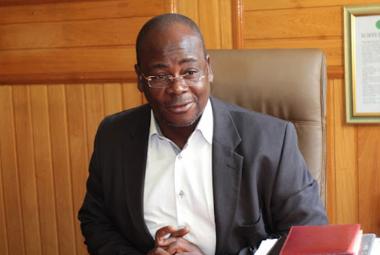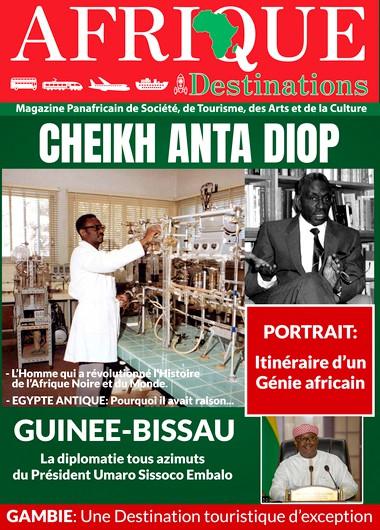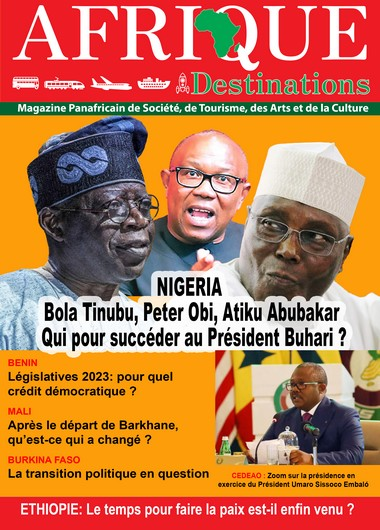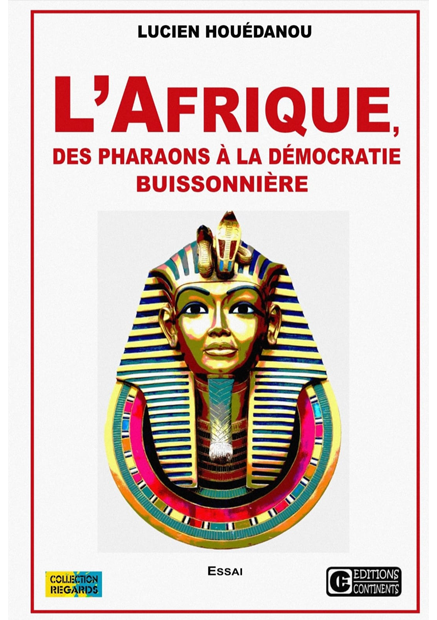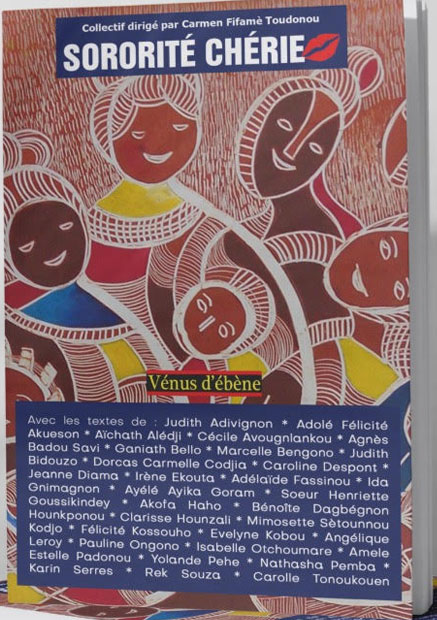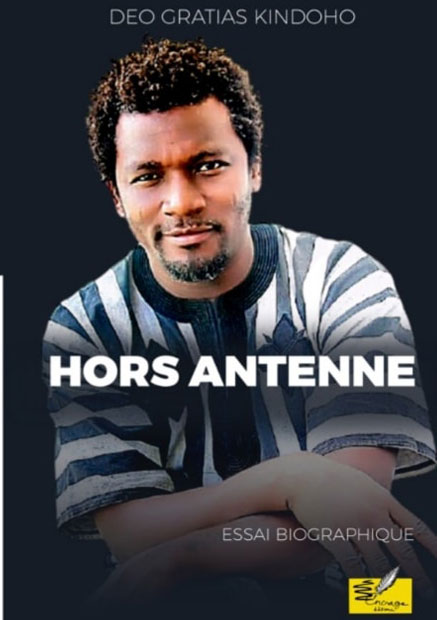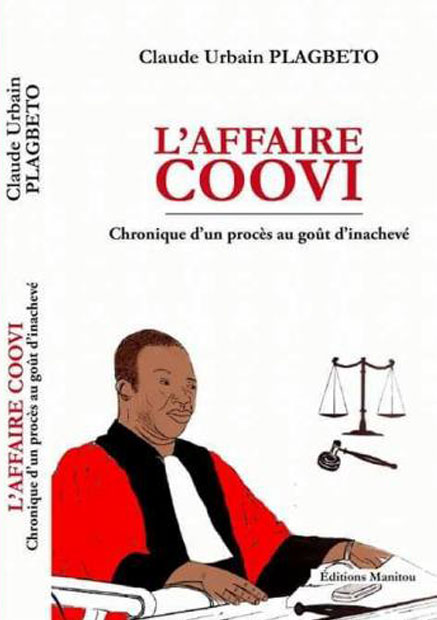My passion for India goes beyond history and ancient languages. I have long defended, alone against and against a number of Indianists, my theory that the Dravidians can only be descended from the ancient Nubians of the Nile Valley. Because of the bundle of indelible linguistic and cultural elements that link ancient Dravidians and Nubians. Thanks to the mysteries of the ancient languages of the Nile Valley. New genetic discoveries tend, as they evolve, to prove me right. It is on the strength of all these elements that I was able to affirm, with indelible proof in support, that not only was Yoga not born in India, contrary to what has long been believed, but even better than the ancestors of the Dravidians were from the same people as the ancestors of the ancient Egyptians. And they were indeed Black. The recent study by Julien Cooper*1 on the origin of the word “Sinai” published in February 2023 in ASADOR Vol. XI, No. 2: https://www.asor.org/anetoday/2023/02/sinai-journeys-khety/ only confirms and clarifies certain definitions that I had proposed in my works and publications. And vice versa…
About my research, I make a point of recalling as a leitmotif that the contradictory debate is essential to evolve in our quest for the renewal of knowledge, in particular on Prehistory. And to write almost this practically in all my works: "As usual in my writings, I constantly insist on the fact that if I do not claim to hold the truth, but I refuse to anyone to forbid me to strive to seek it or to seek to understand and to know. What I write is not sealed with secrecy or confidentiality. And it's not sectarian either. This is why I write books. So that we debate it and that from the debates spring the light that drives out the darkness of ignorance. And for good reason, each time I constantly call for contradiction in the event of disagreement. You can still read it in my next book to be published: “ZIRYAB, The Blackbird of Emir Abd al-Rahman II of Córdoba: an exceptional Andalusian musician and scholar in medieval Europe”.
In my book Le Flamenco: Une musique andalouse aux racines indo-africaines (Flamenco: Andalusian music with Indo-African roots), Éditions Complicités, Paris, 2021 (best book on the history of Flamenco in the selections of 2022 and 2023: https://livresz.fr/genres/livres- sur-le-flamenco), the tenth reason I cite to affirm the Indo-African origins of this music concerns languages. On point 10, I write in particular this: "The tenth reason: The languages of India in general and more particularly those on which its different forms of spirituality are supported - Jainism, Hinduism, Buddhism, Sikhism - draw their substrate from the Negro-African Languages (LNA) and only the ancient languages of the Nile Valley. The language of the Natemba, that is to say the Nateni, constitutes not one of the survivals but the last survival of these archaic languages and the one thanks to which it is henceforth impossible to erase ideology at once or racism the preponderant role of the presence of Blacks in the oldest India. Especially since the ancient Nubian or ancient Nara, from which it derives so to speak, was very fortunately the fundamental language or source language of the Pre-Vedic liturgy. As evidenced by its traces still vividly in present-day India. Of which act! ”
Later, in the same work, I point out the astonishing similarities between the languages of the oldest India and Nateni, the language of the Natemba of North-West Benin Republic and which is also my mother tongue: "It is by no means a fortuitous coincidence that this region on the borders of Afghanistan and Pakistan (ancient India) was called Hindu Kush and testimonies of ancient authors prove it. Moreover, in Sanskrit, it is established that the name Pāriyātra Parvata which designates this famous mountain range of the Hindu Kush is a combination of the words Pāri: "to cross" or "to make cross" and of Yātrā: "journey", " displacement", "expedition" or "migration". Words which, for many millennia, still mean almost the same thing in today's Nateni both phonetically and semantically. In the Nateni language, Pali means "to cross" and Ya or Yahoun: "journey", "displacement", "expedition" or "migration".
In the more than a decade since I made this discovery, I have had to carry out verifications and accumulate other evidence. It is after having acquired today the certainty of the undeniable linguistic link between the people to which I belong and the Indians precisely that I decided to start speaking about it publicly. Although I had previously opened up about it to several Indianists, including Professor Bernard Sergent*2. Who had a very attentive ear and strongly encouraged me to continue my research. Bernard Sergent, author of the scholarly book on India entitled Genèse de l’Inde (Genesis of India), a famous Indianist, Researcher at the National Center for Scientific Research (CNRS) and also President of the French Society of Mythology, had already contributed through his research and analysis of the evidence that between South India and West Africa in particular and Black Africa in general, there was a clear connection from the earliest times.
After several researches and cross-checks, I can now affirm that this language called Nateni in the North-West of Benin Republic was the language of the last ultra-conservative or ultra-Orthodox priests from the last Sao who migrated from Lake Chad to the interior of the West Africa. And these Sao were the descendants of those about whom the Senegalese scholar Cheikh Anta Diop asserted that they were already well and truly settled in Lake Chad, at least 2,300 years before Christ. Cheikh Anta Diop was therefore right when he was given a bad trial in the West. As also on the essential fact that the ancient Egyptians were Blacks. I have confirmed it with great detail and ready to discuss it through my book: Dictionnaire des concepts de l’Egypte antique : les preuves indélébiles de A à Z que les Egyptiens anciens étaient des Noirs d’Afrique, (Dictionary of ancient Egyptian concepts: the indelible evidence from A to Z that the ancient Egyptians were Black people from Africa), Editions Complicités, Paris, 2021. Professor Charles Bonnet*3 who is the discoverer of the “NUBIAN PHARAOHS” or “KOUSHITE PHARAOHS” instead of “BLACK PHARAOHS” as I like to remind everyone, with insistence, foreword to my very first historical essay there is just ten years old had understood what I wanted to talk about, even as I started my publications. No thanks will be enough to pay tribute to him for what he did for me personally, but even more so for all of Black Africa at a time when many of his Egyptologist colleagues thought that there was no longer any civilization on this continent beyond the border of Egypt.
On the origin of the name of Mount Sinai
To come-back to the term “Sinai”. In his article on the origins of the name Sinai and its biblical location which is entitled The Earliest Mention of the Placename Sinai: The Journeys of Khety, Julien Cooper concludes in these terms: "Another implication of this equation is the etymology of “Sinai”. One of the most commonly espoused origins for the name is a link to the Hebrew word snh “bush”, an idea that finds its origin in the biblical narrative itself regarding the famed burning bush from which god spoke to Moses; although many other etymologies have been proposed, such as a link to the wilderness of Sin. The “bush” etymology is perfectly supported by this transcription of Ṯnh(t), although it can only be guessed how a series of sound and dialect changes may have later reproduced a name like Hebrew Sînay. *4”.
It is less the location of Mount Sinai than the origin and meaning of this name that interests me the most. And the study of Julien Cooper finally allows me to confirm the original meaning that I had given to the words Sindh, Singh and others in my works and publications. Which words have, in my opinion, from a strictly philological point of view, an obvious correlation with the word Sinai or Ṯnh(t) or even Tjenhet as the ancient Egyptians conceived its semantics. And such as the famous Khety, a "seal bearer" and "career overseer" in the Sinai and who lived under the XIth dynasty of Egypt (circa 2150-1990 BCE) mentioned in Julien Cooper's article talks about it in ancient Egyptian texts. Moreover, they shed light on the meaning of the word Sinay in Hebrew.
When the history of ancient India sheds light on that of ancient Egypt...
To go further about the belonging to the same root of the words Sinai, Sindh, Singh and others, it is necessary to make some linguistic comparisons with toponyms or epithets:
If we remember that, in Sanskrit सिंहपुर, Siṃhápura (“Town of lions”), is composed of सिंह , Siṃhá (“lion”) and पुर , Pura (“town”), this amounts to saying, contextualizing and taking into account the evolution of languages, that the derivatives of Siṃhá have an obvious link with the word Sinai as it has come down to us from ancient Egyptian thanks to the testimony of the famous Khety.
Singh is a male name which means Lion in India whose female counterpart to say Lioness is Kaur. I must immediately point out that it is the Kaur of the Indians which is the Qwori or Kwori of the Meroitic language and the Nateni language. Although the Natemba use it both masculine and feminine today.
The Siṃhá, meanwhile, is a word that is still used among the Natemba to express the same original concept of "danger", "wild", "harmful", etc. Despite the evolutions it may have experienced on one side or the other, it is obviously a word with a common origin to the distant ancestors of the Natemba and the current Indians. And it is no coincidence that, in the bestiary of African teams, we find Les Simba as the name of the national football team of the Democratic Republic of Congo from 1997 to 2006. In Swahili language, Niger-
To frighten naughty children and calm them down, Natemba traditions have a magic formula that always works. It is to appeal to a being half-animal and half-man called Sin-Kyéni or Sin-Kheni, the equivalent of Yeti in Asia. It is not surprising that the Yeti, also called "abominable snowman", is associated with the folklore of Nepal, India, Bhutan and Tibet. And if these peoples have never been able to bring material proof of its existence to the scientific community, the Natemba have never brought proof of their Sin-Kyéni or Sin-Kheni either. Better, I am convinced that the Natemba as much as all these peoples of Asia speak of the same "abominable man", "eater of children" among the Natemba.
The Natemba also oppose in the cosmogonic and religious dualism Siṃhá (the evil) to Souma (the good). These two terms are just as much Indian as Natemba. The list of common linguistic elements, and above all relating to the fundamental liturgy, is so long to list that I have had no doubts for a long time about what was for me a theory at the origin of my research.
The name of the country that is Singapore is composed of Sing and Pur, which gives Sing-Pur which will become Singapore. All the Natemba will agree with me that the ending Pur or Pouori is used to designate a place, a locality, etc. The same is true in India. Names of localities ending in this way still exist in Natemba Country, like Sinkou-Pouori or Baga-Pouori or Bagapodi, etc. And Pouori, for short, is a locality name whose second name is just as Indian as Natemba: Douani or Dhani. And for the Descendant of Scorpio that I am, - because my Tribe, that is to say the NANFA KWEBA (Descendants of Scorpion) takes its name from an ancient lineage of the Nile Valley - it is an eminently important spiritual center, long before Tayakou, the political and religious capital of the Natemba.
In my book entitled Inde - Pourquoi le Yoga n’est pas né en Inde : Les secrets de l’origine des Dravidiens (India - Why Yoga was not born in India: the Secrets of the Dravidians' origins), Éditions Complicités, Paris, 2020, I had already mentioned the obvious link between the word Sindh or Singh and the "bush". », « the savage », « the danger », etc. in ancient languages. But I was very far from making the connection with the origin of Mount Sinai. With Julien Cooper's article, I am now convinced of the link between Sinai and all the root words inherent in Sindh.
I will never stop saying it enough: the Natemba of North-West Benin Republic have something to do with the oldest India. And that is the fact of sharing with these so-called Dravidian peoples a very ancient common ancestry from the Nile Valley which dates back to at least 15,000 years before Jesus Christ. To India for Indians and to West Africa for Natemba. The example of the linguistic substrate that the current Natemba share with the Peoples of present-day India, is quite simply due to the fact that it is precisely because the Ancestors of the current Natemba migrated from their Nile Valley of origin to destination of West Africa, taking with them all their cultural elements of the time and that the Ancestral Peoples of present-day India – Cousins of those of the Natemba – also migrated from this same Nile Valley originally destined for the Indus Valley that they still have the same lexicon today, which dates back to at least 15,000 years BC. A lexicon, which says better, that even in the Pharaonic era, the ancient Egyptians had already almost lost a large part.

In the epilogue of my historical essay LES SAO DU LAC TCHAD Une Civilisation antique et mystérieuse au Centre de l’Afrique Noire (Paris (THE SAO OF (LAKE CHAD An ancient and mysterious civilization in the center of Black Africa), Editions Complicités, Paris, 2022, I evoke royal symbols to talk about spotted felines. “The ancestral words used to call a spot or being spotted in the Nateni language are: Tiengari and Tiengama. And the term Manda is only used for big spotted cats. Kori or Qore or Kwori, a word which means the same thing in the Meroitic language as in the Nateni language, designates exclusively the Lion in the subfamily of the big cats known under the generic name of Panther (Jaguard, Cheetah, Tiger, Ounce, Leopard and Lion) ".
And to conclude :
“In my earlier work, I have repeatedly had to point out that this name was one of the countless fossil words that the Migration Out of Africa brought to Asia. And this is the reason why one of the great rivers of this continent is called MeKong, that is to say Mé or Mae (Mother) and Kong to mean Mother of all rivers and that an administrative region special of China is also called Hong-Kong, that is to say Hong (Flagrances) and Kong (River) to mean River of fragrances which one calls Port with the perfumes. All of Asia and, to a large extent, China is like a repository of fossil words from the ancient Negro-African Languages (LNA). Even if it is difficult for some specialists to hear it like this today, one day we will have to resolve to carry out studies that I would call "linguochronology" or "linguachronology". It is necessary for History and Linguistics in particular to determine the ins and outs of the presence of these fossilized deposits of typically Negro-Afrian words in the Languages of Southeast Asia (LASE). Whether by its name of Mother of all rivers or River Kong in the Taï language or by its name Méigōng Hé or River Kong River in Chinese or by River of the Nine Dragons or Sông Cửu Long in Vietnamese, the Mekong carries this root within it. archaic designating any watercourse and from which it inherited from the oldest Black Africa. And I will never stop repeating it enough, there are incalculable words of this kind in the languages of Asia in general and of India in particular. Moreover, the repetition effect - or the emphasis if you will -, which is translated by River River that we find in these languages is also omnipresent in the old Negro-African Languages (LNA), in this case those of the Nile Valley”.
As I recently wrote to one of my editors, in this case the Historian Dieudonné Gnammankou*3 who is spending a university year in the USA, after having read a misunderstood review of one of my works, I am in the process of resuming my theory about Nubia and the origins of the single Mother language. I want to bring more convincing elements to the scientific world, especially with the new discoveries of recent years. To prove that what I was already saying was not an invention but based on elements which are constitutive in the Languages of Black Africa, but which we understand badly or not at all. And I'm going to take some time to work on this, back it up with evidence, to convince the scientific community that the "bottleneck theory", which I didn't invent, is indeed credible and verifiable concerning the single language at the origin of all current languages.
By Marcus Boni Teiga
*1- Julien Cooper est égyptologue à Macquarie University (Sydney) et United International College-Beijing Normal University, Zhuhai (Chine). Il est l'auteur de Toponymy on the Periphery: Placenames of the Eastern Desert, Red Sea, and South Sinai in Egyptian Documents from the Early Dynastic until the End of the New Kingdom. (Brill 2020).
*2 - Bernard Sergent, “Genèse de l’Inde”, Payot, 1997
*3 – Charles Bonnet was admitted to the Collège de France as Visiting Professor in 1985. Member of the curatorium of the Swiss Institute for Architectural and Archaeological Research in Ancient Egypt, Cairo (Borchardt Foundation) since 1989, he chaired the Scientific Commission of the Swiss-Liechtenstein Foundation for Archaeological Research Abroad from 1998 to 2013.
*4 - Julien Cooper, The Earliest Mention of the Placename Sinai: The Journeys of Khety, ASADOR Vol. XI, No. 2, février 2023: https://www.asor.org/anetoday/2023/02/sinai-journeys-khety/
*5 – Dieudonné Gnammankou is a Slavic philologist and historian. He is pursuing research in Paris (EHESS). A foreign member of the Pushkin Society of Russia and of the Pushkin Center in Nancy, he has given lectures in Moscow since 1995 on Pushkin and his ancestor. He is the first to have formally identified the African homeland of Hanibal, thus ending a century of controversy in Russia.








